Ryan Hall's Blog, page 326
November 5, 2015
2015 Holiday Gear Guide: Racing Gear
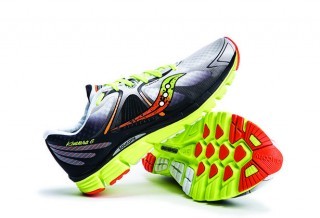
$190
Featuring a full coverage lens, super light frame and full venting, you can run as hard as you want in the Aero without fear of fogging up your field of vision.
The post 2015 Holiday Gear Guide: Racing Gear appeared first on Competitor.com.
November 4, 2015
Trail of the Week: Westmoreland Sanctuary, New York
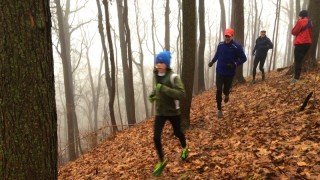
Our Trail of the Week feature is made possible through a partnership with Trail Run Project.
The miles of trails inside Westmoreland Sanctuary explores 640 unblemished acres of wilderness in New York, about an hour north of New York City.
This route features all singletrack trails. The trails give a feeling of wilderness as you pass cliffs, ridges, ponds, and boardwalks. There are some mushy areas for parts of the year, so be prepared with proper footwear. Users won’t be disappointed, as it is a beautiful park.
This specific run features Cole’s Kettle, a natural pond/wetland area formed by glaciers. All of the surrounding forest drains into the kettle and then into the ground water for nearby wells.
Eventually, the trails can be used to connect over the highway to Butler Sanctuary.
The Data
Miles: 5.4
Runnable: 92 percent
Average Grade: 5 percent
Max Grade: 22 percent
Total Ascent: 717 feet
Total Descent: -711 feet
Highest Elevation: 721 feet
For a closer look, check out the interactive map, data, photos and virtual run simulator courtesy of Trail Run Project:
The post Trail of the Week: Westmoreland Sanctuary, New York appeared first on Competitor.com.
9 Races With An Amazing Ocean View
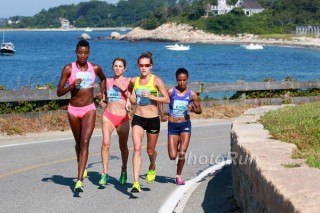
Whether it’s a quick 5K, or an arduous marathon along hilly terrain, a course with an ocean view makes all that hard work a little more worthwhile. These nine U.S. races combine sweeping views with unique traits that reflect the diversity of American geography and culture.
Photo Gallery
1 of {count}
Back to Start
View Larger Image

Newport Marathon
This classic New England race provides runners with panoramic views of the Atlantic Ocean. Along with the stunning natural scenery, you’ll also get to see the very best of both Newport and Middletown including vista views of mansions along Bellevue Avenue. Though conditions can always vary, this race held in early October allows participants to get a first taste of fall. Photo: Courtesy of Newport Marathon | Jon Clancy Photo
View Larger Image
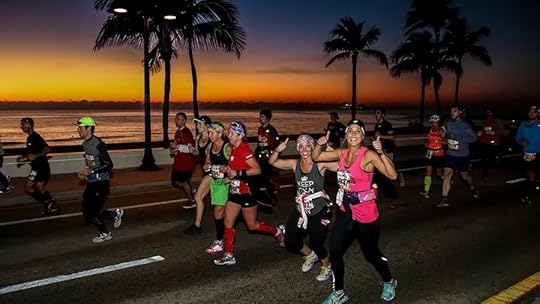
Fort Lauderdale A1A Marathon
If you don’t live in Florida, your only reference point for A1A may come via Vanilla Ice. Putting 90s references aside, the A1A Marathon is flat, fast, and filled with views of the Atlantic. If you’re stuck shoveling snow in February, the A1A Marathon is a perfect venue to thaw out and run a fast time. Photo: Exclusive Sports Marketing
View Larger Image

Bay to Breakers 12K
The only way to describe Bay to Breakers is that it’s not as much a race as it is an experience—and a quintessential San Francisco one at that. The 12K course wraps through the city, beginning near The Embarcadero just blocks from the San Francisco Bay and finishes on Highway 1 at Ocean Beach. The race, which began in 1912 and is the longest consecutively run footrace in the world, combines the scenery of the City on the Bay with the unique culture that includes thousands of costumed runners, walkers and teams of "centipedes" joined together at the waist. Photo: Allan Rouge
View Larger Image
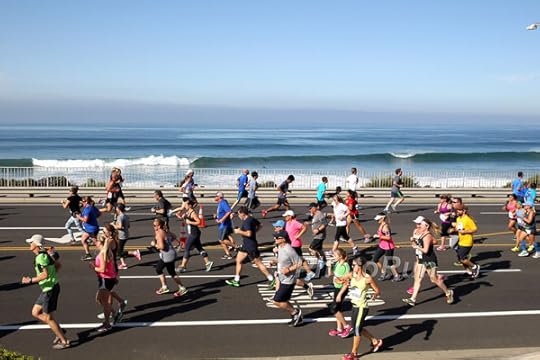
Carlsbad 5000
Known as the World’s Fastest 5K, this race is also really, really scenic. Carlsbad features a mixture of walkers and joggers to some of the most elite runners in the world. You may not be out there for long but while you are, experience the beauty while breathing in the salt air of this Southern California beach town. After you finish with a PR, enjoy a free post-race beer and a concert at the Party by the Sea! Photo: PhotoRun.net
View Larger Image
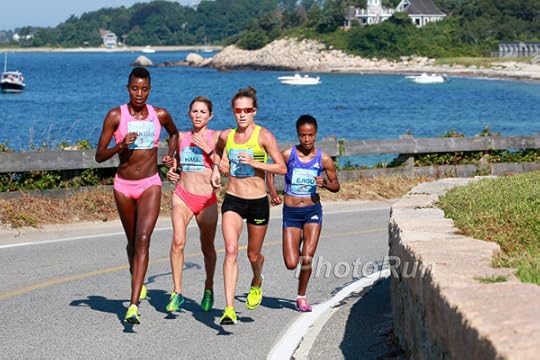
The Falmouth Road Race
What started as the brainchild of a local Boston bartender during the 70s has grown into one of the premier non-marathon races in the world with participants that include both former and current Olympians. With views of Massachusetts' Cape Cod shoreline throughout, the hilly seven-mile course begins in the town of Woods Hole and finishes on Falmouth Heights Beach overlooking Martha’s Vineyard Sound. Photo: PhotoRun.net
View Larger Image

Rock 'n' Roll Virginia Beach Half Marathon
Talk about a festive atmosphere! With live local bands and massive crowds cheering you on along the flat Virginia Beach course, you’re sure to run a fast time (or at least lip sync to a Bruce Springsteen cover). It finishes along the boardwalk and is a must-run if you’re in the Mid-Atlantic at the end of summer. Photo: PhotoRun.net
View Larger Image

Beach to Beacon 10K
This race is so popular that local and general entry fills up in minutes. Founded by Maine running legend and gold medal winner of the first women’s Olympic marathon, Joan Benoit Samuelson, the Beach to Beacon is capped at 6,000 runners (including some of the most elite in the world). The picturesque course offers stunning views of popular locales like Smugglers Cove and Casco Bay and finishes at Portland Head Light—the most photographed lighthouse in the world. Photo: PhotoRun.net
View Larger Image

Big Sur International Marathon
It’s one thing to drive 26.2 miles on the “rugged edge of the western world,” but it’s another to grind up and down steep mountainous terrain while staring at miles of what appears to be an endless Pacific Ocean. Although you’re running along a USATF certified Boston Marathon qualifier course, it won’t feel like Boston at all. No hype, no big crowds with signs and certainly, no city streets. Instead, you’ll be running along the legendary Highway 1 (PCH as the cool kids call it) from the heart of Big Sur to the town of Carmel. Take in the most scenic stretch of highway in the U.S. and forget that your quads will feel like bowling balls. Photo: O’Keefe Design + Photography
View Larger Image

Maui Marathon
Need a reason to go to Hawaii? Assuming you like to move around when you’re on vacation, the Maui Marathon (Hawaii’s oldest marathon) is not just scenic, but it’s also a solid alternative to the sea of people you’ll be surrounded by at the Honolulu Marathon. Not to mention from the 15K mark to the finish line, you’ll have unabated views of the Pacific Ocean.

More Galleries
The post 9 Races With An Amazing Ocean View appeared first on Competitor.com.
How to Run Your Fastest 10K Ever
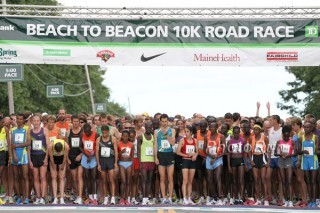
Photo: PhotoRun.net
The 10K is like the 5K’s ugly step-sister: it’s often used as a tune-up race, but rarely do runners focus on it.
So why is the 10K ignored as a race distance to earmark as a “goal race?”
I don’t have the answer. But I do know that at 6.2 miles, it’s long enough to demand the resiliency of a trained distance runner but short enough to require the speed and kick of a mid-distance runner.
RELATED: 10 Must-Do 10Ks in the United States
If you’ve struggled with the 10K, you may be focusing too heavily on the long run and overall weekly mileage (like many marathoners rightly do). Or, you may be putting too much emphasis on speed.
Successful runners know that a new 10K personal best needs both: each must be developed to record a strong finish.
Today you’ll learn a 3-pronged approach to training for the 10K that will help you run a new personal best.
The post How to Run Your Fastest 10K Ever appeared first on Competitor.com.
Do Probiotics Help With Training?

Photo: iStock
This article first appeared on Triathlete.
Q: I’ve heard that probiotics can help me in training. What are the best sources, and how much do I need daily?
A: Probiotics are a hot topic, with mounting research supporting the notion that consuming probiotics regularly can improve health and well-being. Manufacturers and marketers have caught onto their benefits and, as a result, supermarket shelves are filled with new products touting their probiotic properties.
Here’s the lowdown: Billions of bacteria live inside our gastrointestinal tract. More than 500 of these microbial species are “friendly,” assisting in the function of digestion and supporting the immune system. Many factors can contribute to a disruption of the bacteria within our gut: medications, stress, fatigue, inflammation, nutritional status and even age. The resulting reduction in beneficial bacteria gives potentially harmful disease-causing bacteria the opportunity to flourish.
This is where probiotics come in. Ingesting certain foods or supplements containing healthy bacteria can help maintain good gut health. Just as important are prebiotics, the non-digestible food particles (think skins of fruits and vegetables, seeds and nuts) that sustain or fuel the probiotics. Working together, prebiotics and probiotics achieve the best gastrointestinal environment for well-being. Improved health and a stronger immune system means you can train effectively and consistently without interruption due to illness and fatigue.
Here’s what to look for on the label when shopping for probiotics:
Live and active cultures. For probiotics to have any beneficial effects they need to reach the intestine alive and in sufficient numbers. Some products may contain cultures in insignificant amounts—or may have at some point contained cultures that have since been destroyed during the manufacturing process. For a product to claim it has live and active cultures it needs to show it has more than 100 million bacteria per gram at time of manufacture.
Culture count. Ingesting 1 billion CFUs (colony-forming units) per day is helpful for people trying to simply maintain gut health; you should ingest 10 billion CFUs per day if you’re trying to reduce the severity of a gastrointestinal illness.
Culture specificity. Some probiotics work best for specific illnesses, so variety is better. Look for one that lists multiple culture strains.
Pills or food? During times of stress—increased training load, family/work pressures, illness—it might be prudent to increase your consumption of beneficial bacteria, and you may need to supplement with pills or with specialty probiotic “shots” such as Yakult, DanActive or Good Belly Shots. Bacteria can also be concentrated and packaged into pills or tablets for an even greater concentration of CFUs. Strains and strain count vary greatly, as does recommended dose, so check labels carefully.
TIP: Because bacteria are sensitive to heat and light, many probiotics are found refrigerated and must be stored chilled, while others have been stabilized to be effective even at room temperature. Check the “use by” dates and use within the specified time for efficacy.
The post Do Probiotics Help With Training? appeared first on Competitor.com.
Workout of the Week: 5-n-Go Tempo
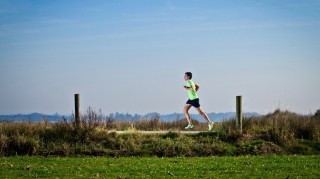
Photo: www.shutterstock.com
The tempo run is one of the staple workouts of most longer distance-focused training programs. Why? Quite simply, tempo runs address the specific demands of racing a half or full marathon better than any other type of workout, allowing you to dial in your race pace, tweak fueling strategies and sharpen your mental game for the long grind of your upcoming 13.1 or 26.2-mile quest. This isn’t to say fartleks, track workouts, hill sessions or the like aren’t essential ingredients in a balanced training program, but in order of importance, regular tempo runs are going to yield the biggest payout come race day.
So what constitutes a tempo run? The answer often depends on who you ask, but for our purposes here, we’ll define a tempo run as 5 or more continuous miles at half marathon or marathon race pace.
The 5-n-Go Tempo is only a slight deviation on the standard tempo run. It’s a great confidence-building workout for half marathoners to try and nail 10-14 days out from race day. After warming up for 2-3 miles, run 5 miles at your half marathon race pace and then “go” for a mile, dropping the pace by 15-20 seconds (or right around your 10K race pace). Cool down with 2-3 miles of easy running for a total of 10-12 miles on the day. It’s that simple and straightforward. This workout will help you to find another gear when you don’t feel like shifting, which can be helpful when responding to a mid-race move or winding up for a strong last mile.
For my marathoners, I like to assign a double 5-n-Go Tempo workout in place of a long run about 3 weeks out from race day. Warm up with 3 miles of easy running, then run 5 miles at your goal marathon pace followed by a “go” mile that’s 15-20 seconds faster than marathon pace (or right around your half-marathon race pace). Recover from that effort with 2 miles of easy running before doing another round of the 5-n-Go Tempo. Cool down with 3 miles of easy running for a total of 20 miles (including 12 miles of quality work) on the day. This is a great workout to practice running goal marathon pace on tired legs and presents an excellent opportunity to dial in your race-day hydration and nutrition strategy. It’s also a very demanding session, so be sure to take your recovery seriously in the 3-5 days following the workout.
That’s the 5-n-Go Tempo. It’s simple and specific, and will give your fitness—and more importantly, your confidence—a nice boost before race day.
RELATED: Alan Culpepper’s Track Tempo Run
The post Workout of the Week: 5-n-Go Tempo appeared first on Competitor.com.
Interesting Post-Race Data From The 2015 New York City Marathon
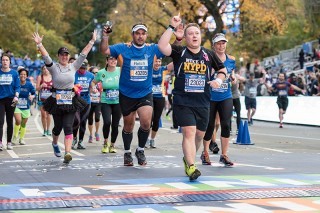
On Sunday, 49,617 runners crossed the finish line of the 2015 TCS New York City Marathon—the third largest total in race history. Photo: Matt Trappe
Based on finisher totals from this weekend’s race, the New York City Marathon has retained its title as the world’s largest marathon. On Sunday, 49,617 runners finished the iconic race through the city’s five boroughs. It’s not the largest total—it has a record 50,530 last year and 50,266 in 2013—but it is still expected to be the highest total for 2015.
Here are some more interesting facts and data released by the New York Road Runners following this year’s race:
The Field
Note: All finisher numbers and results are unofficial pending race results review. Official results will be released later this month.
• 50,235 starters
• 49,617 finishers
• 28,914 male finishers
• 20,703 female finishers, highest in event history
• 125 countries represented
• 50 states and the District of Columbia represented
• Oldest male runner: Richard Gonzalez, 83, Lousiana, 6:54:51
• Oldest female runner: Agnes Roest-Bomers, 84, Netherlands, 5:40:23
RELATED: Scenes From Inside the 2015 New York City Marathon
Winners
Female open race winner: Mary Keitany, 33, Kenya, 2:24:25
First repeat champion since Paula Radcliffe (2007, 2008)
Eighth woman to win multiple New York City Marathon titles
13th fastest performance in event history
Male open race winner: Stanley Biwott, 29, Kenya, 2:10:34
First TCS New York City Marathon victory, and Abbott World Marathon Majors race win
Female wheelchair race winner: Tatyana McFadden, 26, USA, 1:43:04 (event record)
Shattered the event record by 7:20
Third consecutive New York City Marathon victory, and fourth New York City Marathon title
Captured her third straight Marathon Grand Slam (winning the London, Boston, Chicago, and New York City Marathon titles in the same calendar year)
Male wheelchair race winner: Ernst Van Dyk, 42, RSA, 1:30:54
Second-fastest time in event history
Second New York City Marathon victory, and first New York City Marathon victory since 2005
First American male finisher: Meb Keflezighi, 40, San Diego, Calif., 2:13:32 (7th place)
Fastest New York City Marathon Masters (40+) performance in history
U.S. Masters (40+) marathon record
First American female finisher: Laura Thweatt, 26, Boulder, Colo., 2:28:23 (7th place)
Seventh-fastest American woman New York City Marathon performance in history
Winners of the first-ever NYRR Youth Invitational at the TCS New York City Marathon (1.8-miles):
Matthew Nieves , 16, New York, NY, 9:42
Julianne Yotov , 12, Brooklyn, NY, 11:16
RELATED: Top 10 Finishers At The 2015 New York City Marathon
Additional Professional Athlete Statistics
• In her marathon debut, Beverly Ramos broke the Puerto Rican national record (2:41:56)
• Finishing fifth, Christelle Daunay set the French masters record with her 2:26:57 performance
• With their 2015 TCS New York City Marathon victories, Tatyana McFadden and Ernst Van Dyk both won the Chicago-New York Challenge and earned $10,000 each
Celebrities and Notable Personalities
· Alicia Keys, 5:50:52: Grammy Award winning singer, songwriter, record producer, and actress; ran on behalf of Keep A Child Alive, an official charity partner of the TCS New York City Marathon
· Ethan Hawke, 4:25:30: Academy Award nominated actor, writer, and director; ran on behalf of The Doe Fund
· James Blake, 3:51:19: Retired professional tennis player; ran on behalf of his foundation, the James Blake Foundation, an official charity partner of the TCS New York City Marathon
Additional notable personalities who ran the 2015 TCS New York City Marathon include:
New York Giants legend and radio personality Tiki (Atiim) Barber, 4:50:56
Actress Katrina Bowden Jorgensen, 4:19:39
Chef Daniel Humm, 3:35:30
Professional snowboarder Chris Klug, 4:13:51
Soprano for the Metropolitan Opera Susanna Phillips, 5:01:31
Susanna sang the national anthem at the start of the TCS New York City Marathon
Chef and restauranteur Marcus Samuelsson, 3:36:42
Producer, actor, photographer Nev Schulman, 3:34:31
NYRR President and CEO Michael Capiraso, 3:54:05
RELATED: How Celebrities Fared At The 2015 New York City Marathon
Grand Marshal
Spike Lee, the New York University tenured film professor, writer-director, actor, producer, author, and iconic New York City figure, served as the 2015 TCS New York City Marathon Grand Marshal, first Grand Marshal from New York City and third in event history; he rode in the Grand Marshal Vehicle with the TCS New York City Marathon Race Director, Peter Ciaccia and held the men’s finish line tape
Digital and Social Statistics
· Nearly 26 million impressions on Facebook during race week (Monday, October 26 to Monday, November 2), including more than 6.5 million impressions during race-day and more than 9.7 million impressions during Marathon Monday
· Top tracked runners via TCS New York City Marathon Live Results (Note: Alicia Keys ran under a different last name):
Ethan Hawke
Alana Hadley
Meb Keflezighi
From 12:06 to 12:07 p.m. ET on race day, there was a peak of 290 tweets per minute using the hashtag #tcsnycmarathon
· 268,567 mobile app downloads as of 11/1/2015
· #TCSNYCMarathon Journey Video platform, journey.tcsnycmarathon.org, was built for marathoners, fans, and volunteers to create race-day recap videos to share socially, this is a first by any brand outside of Facebook itself
- 5,000+ signed up to participate
- 1,065 videos created so far
Race-day Weather
Start (Wave One): 60 degrees, 62% humidity, wind 7 mph.
Finish: 62 degrees, 60% humidity, wind 6 mph.
For searchable results from the 2015 New York City Marahton, go to this NYRR link.
The post Interesting Post-Race Data From The 2015 New York City Marathon appeared first on Competitor.com.
Former IAAF President Arrested On Charges of Corruption
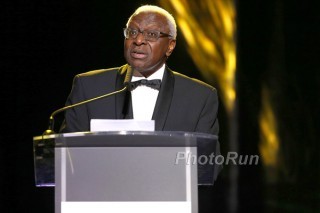
Lamine Diack. Photo: PhotoRun.net
Former International Association of Athletics Federation (IAAF) president Lamine Diack of Senegal was arrested and charged with corruption and money laundering in France on Monday, the Associated Press reported on Wednesday.
The 82-year-old, who earlier this year stepped down as the leader of the organization after 16 years at the helm, is suspected of taking at least 200,000 euros from Russia to cover up positive doping tests, including disgraced marathoner Liliya Shobukhova and others. According to previous reports, Shobukhova claimed she and her husband paid the Russian federation prior to the 2012 Olympic in three separate installments after being threatened that she “could have problems”—i.e., she failed a doping test—and be forced to miss the London Games. German broadcaster ARD reported last year that when Shobukhova was handed her two-year ban by the Russian federation in April 2014, her husband received a 300,000 euro ($370,000) refund, adding it had linked the transfer to Russian federation president Valentin Balakhnichev, who is also the IAAF treasurer.
Habib Cisse, a legal adviser to Diack, and Gabriel Dolle, who was the director of the IAAF’s anti-doping department, are also under investigation by French authorities. The IAAF—now headed by former Olympic champion Sebastian Coe of Great Britain—said it is “fully cooperating with all investigations as it has been from the beginning of the process.”
According to the AP report on Wednesday, the World Anti-doping Agency (WADA) first approached French prosecutors in August with evidence that Diack pocketed money from the Russian athletics federation to cover up indeterminate number of positive doping tests. WADA is also investigating a separate report by ARD that a third of all the medalists in the distance events at the Olympic Games and World Championships from 2001-2012 had blood values that were “highly suggestive of doping or at the very least abnormal”—a claim based on information that was leaked from an International Association of Athletics Federations database of 12,000 blood tests from 5,000 athletes.
Coe, who took ARD’s allegations as a “declaration of war on my sport” just prior to being elected IAAF president in August, is said to be cooperating with French authorities in the probe against Diack.
The post Former IAAF President Arrested On Charges of Corruption appeared first on Competitor.com.
November 3, 2015
Diet Quality: What is it and Why Does it Matter?

Photo: Shutterstock.com
Most popular diets are based on the idea that all healthy foods share one key characteristic. But they disagree on what that all-important characteristic is. For example, the Paleo Diet is based on the idea that all healthy foods are ancient. Plant-based diets, on the other hand, are based on the idea that all foods derived from animal sources are unhealthy. Glycemic control diets, meanwhile, are based on the idea that a food’s glycemic index is what determines weather it is healthy or unhealthy.
The appeal of such theories of healthy eating is their simplicity. The only problem with these appealingly simple theories is that they’re all false. Research has shown that there are exceptions to each of the black and white standards of healthfulness on which popular diets are based. Let’s return to the examples of the three diets named above:
Whole grains are frowned upon by Paleo Diet advocates, but a veritable avalanche of epidemiological studies have found that men and women who eat whole grains frequently are leaner, are less likely to develop type 2 diabetes and cardiovascular disease, and even live longer than those who eat them infrequently.
Fish is forbidden in plant-based diets, but studies show that regular fish consumption reduces the risk of cardiovascular disease and depression and improves brain function in old age.
Potato chips, which have a moderate glycemic index of 54, should be healthier than baked potatoes, which have a high glycemic index of 76, according to the logic of glycemic control diets. But a study published in the Journal of the American College of Nutrition reported that people lost weight after adding five to seven servings per week of non-fried potatoes to their diet, whereas a study by researchers at the Harvard School of Public Health found that potato chips are responsible for more long-term weight gain in the U.S. than any single food.
RELATED: Is the Paleo Diet Good for Runners?
The fact of the matter is that there is no single characteristic that all healthy foods share and that all unhealthy foods lack. Scientists have discovered that the only way to determine whether a food is truly healthy is to see how it actually affects health. The term that scientists apply to foods that positively affect health is “high quality.” There is no common thread in the makeup of foods that earn this designation.
Epidemiological studies have demonstrated time and again that vegetables, fruit, nuts and seeds, whole grains, fish, some dairy products, moderate amounts of alcohol, and olive oil are associated with positive health outcomes. These foods are therefore commonly labeled as high quality. Try as you might, you will find no single nutritional characteristic that is common to all of these foods.
The various types of high-quality foods do not share a single defining characteristic, they benefit health in different ways. And because they benefit health in different ways, they are complementary. Each high-quality food type is healthier when it is part of a diet that includes all of the high-quality foods types. Recent proof of this point comes from a 2014 study undertaken as part of the ambitious Dietary Patterns Methods Project and involving 424,000 older men and women. Its authors found that those subjects who ate all of the high-quality food types most frequently were more than 20 percent less likely to die of heart disease, cancer, and other causes over a 15-year period compared to others.
Nutrition scientists are still quibbling over the exact list of food types that constitutes the highest quality diet. For example, the Healthy Eating Index 2010 does not include alcohol as a high-quality food type, whereas the Alternate Mediterranean Diet does (in moderation). But such discrepancies are small. While advocates of the various popular diets continue to argue over such things as whether a food’s effect on pH balance or its effect on gut bacteria is the true determinant of its healthfulness, mainstream nutrition scientists have quietly arrived at a near-perfect consensus that overall diet quality is what matters, which comes from eating a balance of all types of natural foods.
Focusing on diet quality is not only the best way to eat for general health but is also the best way to eat for running performance. Several years ago I created a tool called the Diet Quality Score (DQS) that enables athletes to easily assess their diet quality on a day-to-day basis. Since then, thousands of athletes have used it to improve their diet quality, resulting in reasonable weight loss and improved fitness. One example is Holly Winchell, a runner from Kansas who started tracking her DQS and within two months lost 6 pounds, 2 percent body fat and broke her 5K PR by a full minute.
RELATED: Do You Know Your Diet Quality Score?
You don’t need my DQS app to get similar results from paying attention to diet quality (and ignoring everything else). All you have to do is consistently eat the highest-quality foods most often and the lowest-quality foods least often. Below is a list of the 10 basic food types. The first six are high quality and the last four are low quality (meaning research has generally shown that they affect health negatively when eaten frequently).
Vegetables
Fruit
Nuts, Seeds, and Healthy Oils
Whole Grains
Dairy
Seafood and Unprocessed Meat
Refined Grains
Sweets
Processed Meat
Fried Foods
You should eat all of the high-quality food types and you may eat all of the low-quality food types (even most elite runners do). Just make a conscious effort to eat each food type more often than any food type that’s lower on the list. Eating healthy really is quite simple—just not in the way that advocates of the various popular diets would have you believe.
RELATED: 10 Essential Foods For Runners
The post Diet Quality: What is it and Why Does it Matter? appeared first on Competitor.com.
Brooks Launches Urban Jungle Collection Shoes
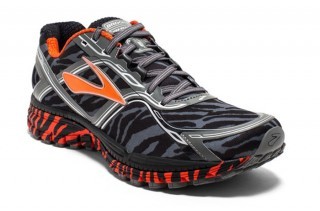
The men's Brooks Ghost 8 features a Zebra-inspired upper.
Running shoes continue to come out in a wide variety of shapes, colors and design elements. This week Brooks unveiled a limited-edition Urban Jungle Collection, featuring bold cheetah- and zebra-inspired printed uppers on special make-up editions of its Ghost 8 and Ravenna 6 shoes. The neutral Ghost 8 (for men and women) carries a price tag of $130, while the stability-enhancing Ravenna 6 (for women only) is going for $120. (Men’s shoes have the Zebra print, women’s shoes have the cheetah print.)
An announcement unveiling the shoes this week said the shoes are “inspired by the animals that inhabit the Africa plains and designed for the urban concrete.” The shoes are available at a select number of retail shops and also online at BrooksRunning.com.
RELATED: Special-Edition Running Shoes for the 2015 New York City Marathon
The post Brooks Launches Urban Jungle Collection Shoes appeared first on Competitor.com.
Ryan Hall's Blog
- Ryan Hall's profile
- 21 followers



